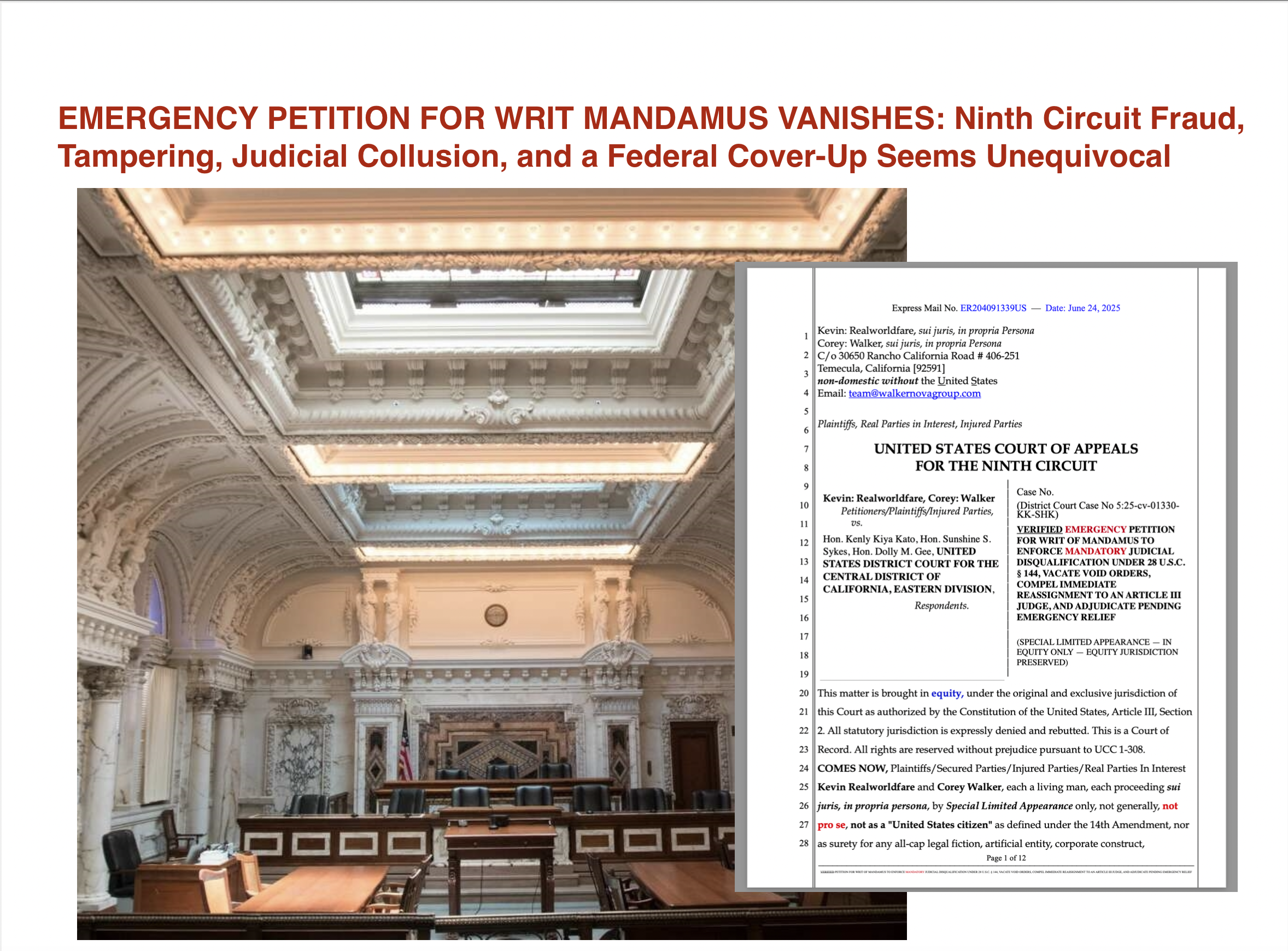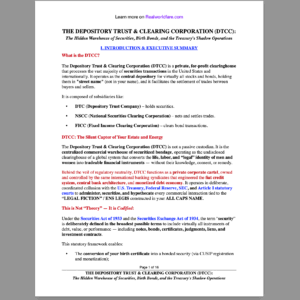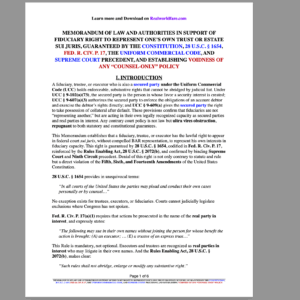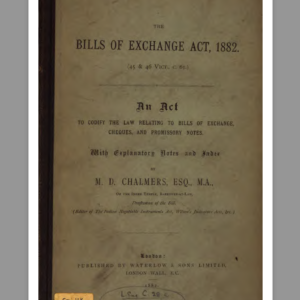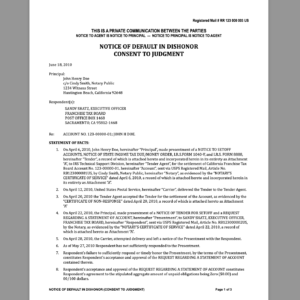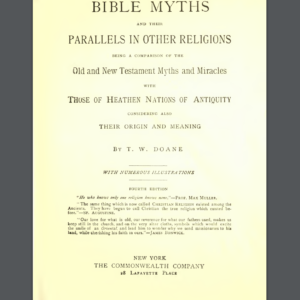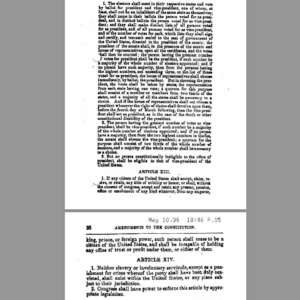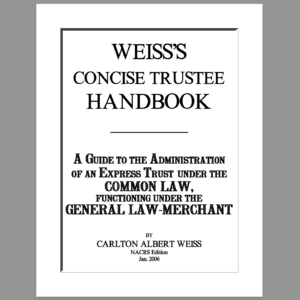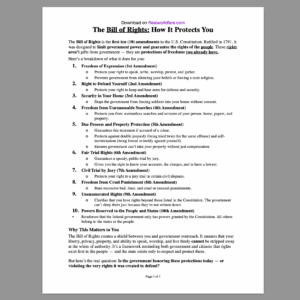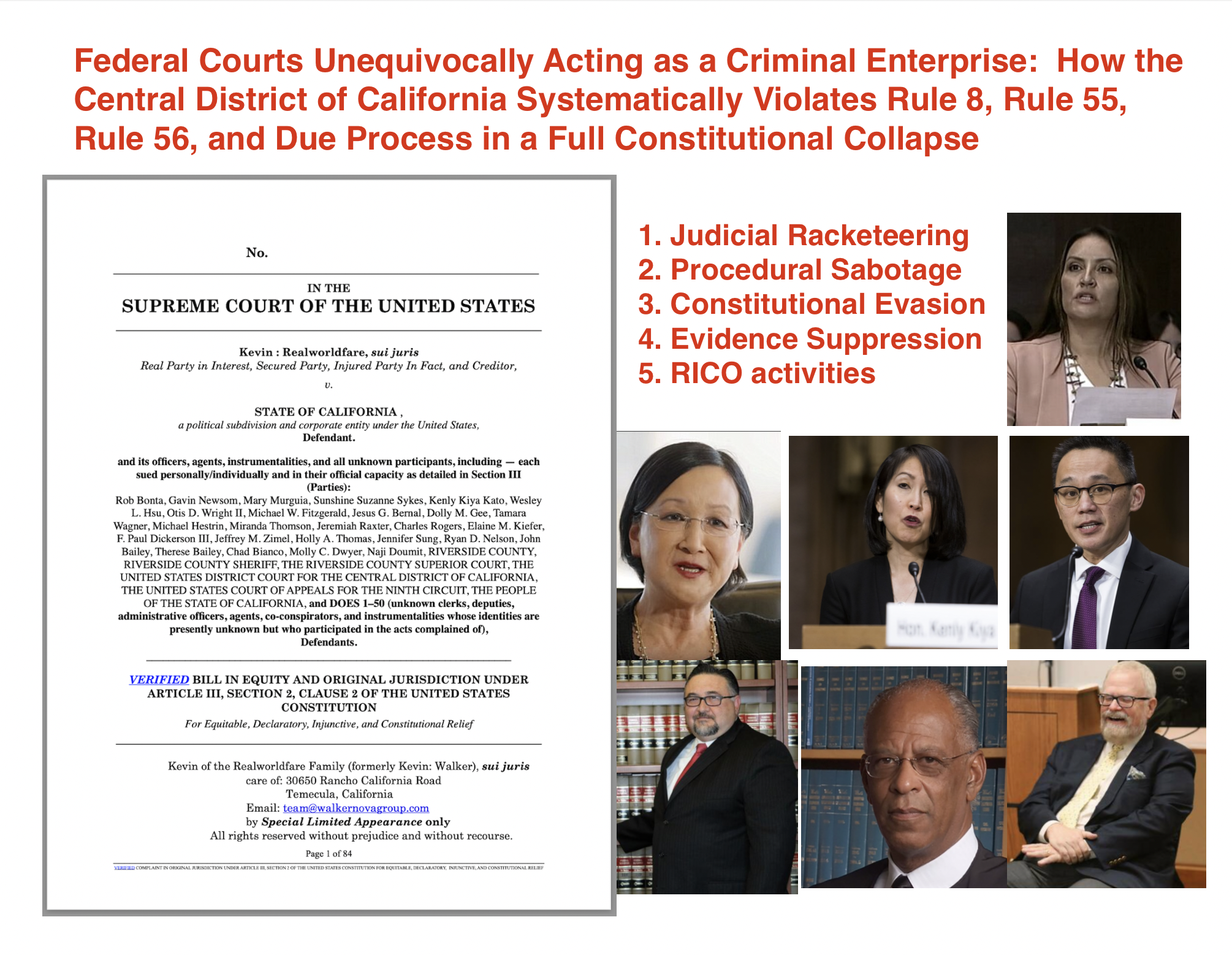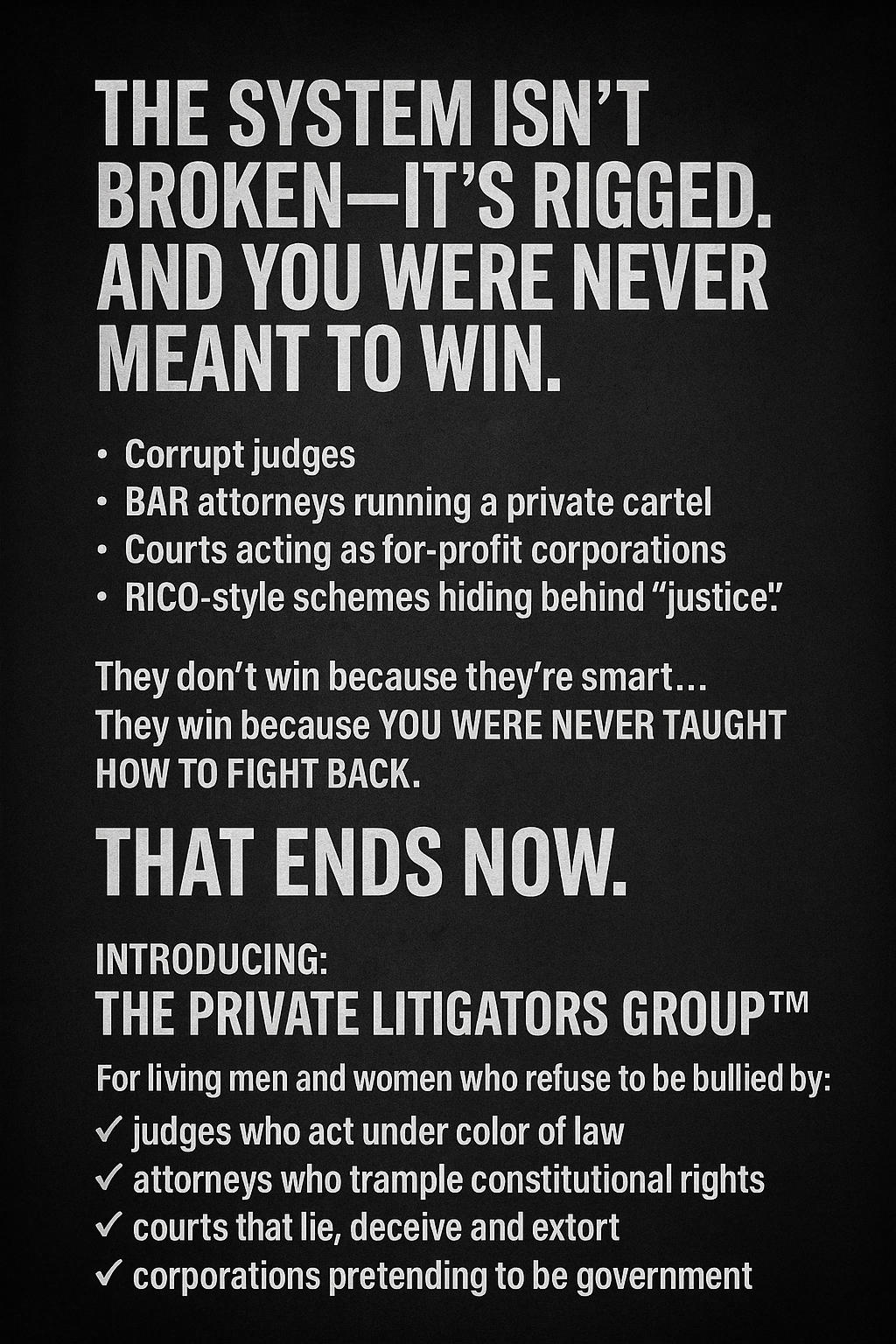In what appears to be a flagrant act of judicial misconduct, tampering, and constitutional subversion, the Ninth Circuit Court of Appeals has inexplicably removed a verified and docketed Writ of Mandamus from its system—without any formal dismissal, sealed order, or notice to the Petitioners.
The Mandamus, filed June 24, 2025, under the All Writs Act (28 U.S.C. § 1651), challenged the ongoing judicial misconduct and statutory violations by U.S. District Judge Kenly Kiya Kato of the Central District of California. The Petition asserted Judge Kato’s disqualification was mandatory under 28 U.S.C. § 144 and § 455 after a verified motion and affidavit were filed alleging extrajudicial bias and conduct beyond judicial immunity. Under clear precedent—including Berger v. United States, 255 U.S. 22 (1921), and United States v. Sibla, 624 F.2d 864 (9th Cir. 1980)—the district judge was divested of jurisdiction and required by law to step down immediately.
Instead, Judge Kato continued to rule, issuing void orders in violation of federal law. After the Mandamus was filed and docketed in the Ninth Circuit (Case No. 25-3996), it disappeared from PACER without any formal disposition. This act is unprecedented, unlawful, and implies deliberate tampering or fraudulent concealment.
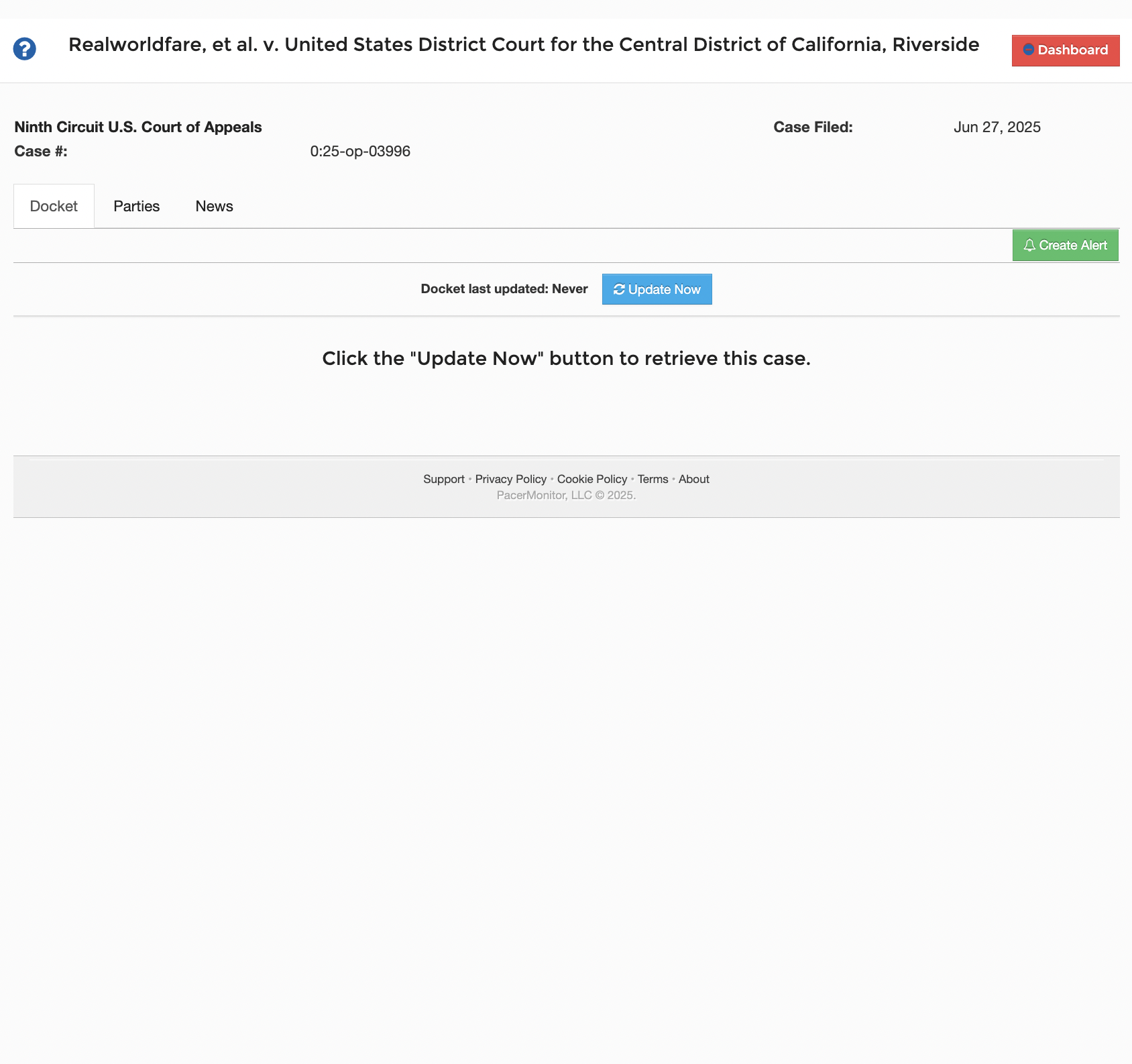
MANDAMUS VANISHES: Ninth Circuit Tampering, Judicial Collusion, and a Federal Cover-Up?
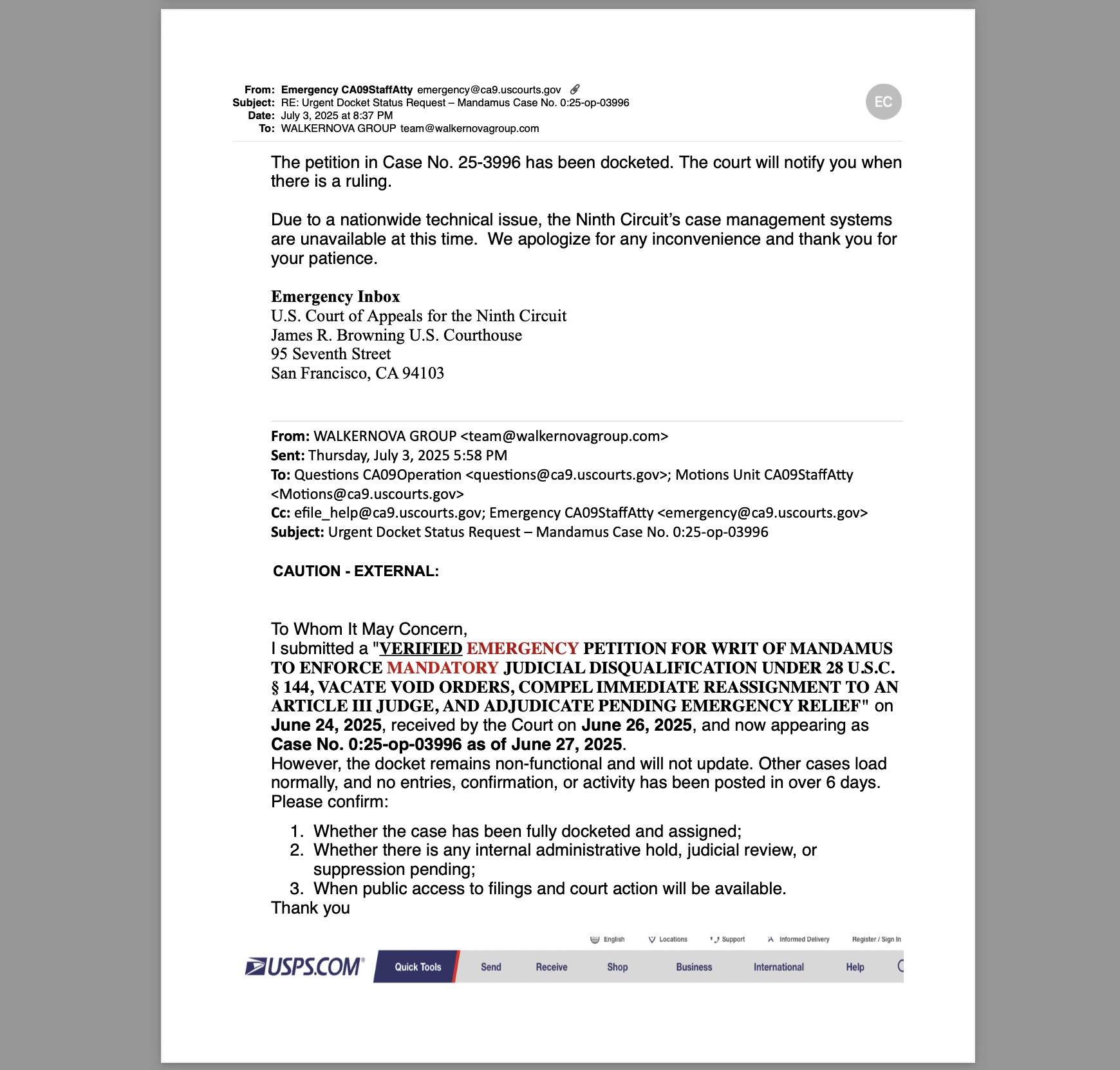
MANDAMUS VANISHES: Ninth Circuit Tampering, Judicial Collusion, and a Federal Cover-Up?

Sykes’ Unauthorized Interference
To make matters worse, U.S. District Judge Sunshine Suzanne Sykes—who was referred the follow-up recusal motion—ignored the pending jurisdiction of the Ninth Circuit and issued a denial of the judicial disqualification on July 7, 2025. This act, taken while an Article III appellate court was seized of the very issue, is a direct violation of the divestiture rule, as affirmed in:
-
Clinton v. Goldsmith, 526 U.S. 529 (1999)
-
In re American Rivers, 372 F.3d 413 (D.C. Cir. 2004)
-
United States v. Claiborne, 727 F.2d 842 (9th Cir. 1984)
Once the Mandamus was filed, the District Court was divested of authority to act further on the matter. Yet Sykes proceeded—without jurisdiction—and thereby nullified both the statutory framework of § 144 and the integrity of the appellate process itself.
Pattern of Judicial Racketeering?
Taken together, the Ninth Circuit’s unexplained removal of a lawfully filed Writ, and the District Court’s continued issuance of void rulings after jurisdiction had passed to the appellate court, presents a clear pattern of:
-
Fraud upon the court
-
Obstruction of justice
-
Violation of 18 U.S.C. § 242 (deprivation of rights under color of law)
-
Conspiracy to interfere with civil rights (42 U.S.C. § 1985)
-
Racketeering activity under RICO (18 U.S.C. §§ 1961–1964)
Time to Hold the Judiciary Accountable
These actions have not only denied Kevin Realworldfare and Corey Walker their rights to an impartial tribunal and appellate redress—they have exposed the deeper systemic rot festering within the federal judiciary. If courts are now capable of erasing filings, defying jurisdictional transfers, and colluding in procedural fraud, then the rule of law itself has been compromised.
The American people deserve answers. Transparency. Integrity. And justice.
Stay tuned.
